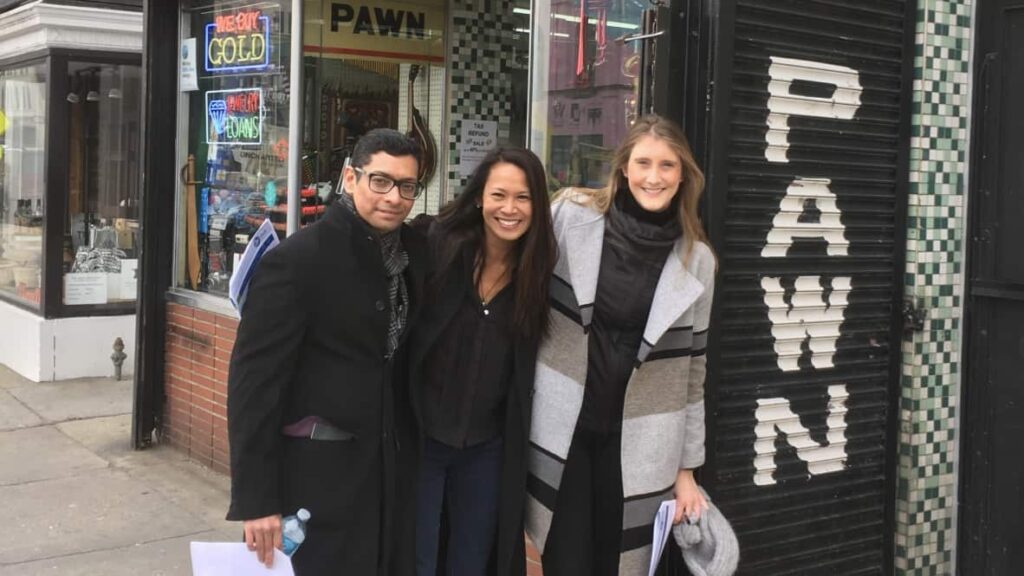Living on the Edge: Lessons from a day in a life of a low-income American

Today is payday. You have to pay your bills and finish your errands before your next work shift starts at 11:30 a.m.
That was the assignment we’d been given from FinX, a field workshop run by the Center for Financial Services Innovation (CSFI) to shed a light on the financial lives of low-income Americans.
Our team was doing the FinX exercise in Washington, D.C., because our mission is to back more user-friendly, affordable solutions for people who are cash-strapped and underbanked. This is not a small segment of the population. Today, more than 70 percent of American households are considered financially unhealthy and struggle on a daily basis to keep up with their bills, save for the future, or access safety nets that can help them weather financial shocks. On the same token, every year, these same households pay roughly $175 billion in fees and interest for financial products and services, which too often fail to improve their situations.
We had read that the LA Times had tried out the FinX experience and called it “humbling” and it was. Like the LA Times reporters, we spent most of our time waiting in lines and paying unexpected fees.
It was a chilly, overcast day in D.C. when we tried to complete all our FinX transactions in under two hours, for the exercise. We had to do it all without using our bank accounts or any of the cards in our wallets.
Our first stop was Money Mart in Anacostia. The storefront was clean and minimalist, except for one wall, which was entirely covered in fee charts. The teller, seated behind the barred, bullet-proof plexiglass, was friendly, but we learned that cashing a payroll check and a personal check would take a lot of paperwork. And each transaction came with a 4 percent fee.
Many of us had to look up info for the forms, like our employer’s cell phone number. It took 15 minutes to complete all the forms, and costed us $11 in fees to get $74 in cash from checks written for a total of $85.
Then we loaded up a prepaid card, for another fee, asked if we could send money to Mexico (a lot more forms), and purchased a money order to pay a utility bill, for yet another fee.
- Starting money: $85 ($70 payroll check and $15 personal check)
- Transactions: cash checks, load up $10 prepaid card, buy money order
- Remittance to family: $30
- Total fees: $19.97
- Ending cash: $34.97
Stripped of our comfortable relationship with the traditional banking system, we were already frustrated, confused, and running out of time. Our crash course in navigating the financial services landscape with limited funds and inappropriate tools revealed many of the tradeoffs and hard decisions Americans make every day. All these fees, and the time taken, are the high costs of accessing liquidity for people whose income is already tight.
After all that, we headed to CVS to receive a MoneyGram remittance. It was our first time using the iconic red phone, and after navigating the touchtone menu, inputting our social security number (SSN) and other personal information, we were finally connected to a live human, who asked us the same exact questions. We finally got a confirmation number to take to the register. For a lot of time, we were just waiting. The whole process took half an hour, before we finally got the $25.
With just 40 minutes left, our last stop was going to a bank. We had to inquire about a $500 loan, find a no-fee checking account, and see if we could get a savings account with a taxpayer identification number rather than a SSN.
I suddenly felt nervous and intimated opening the doors of banks I’ve walked in and out of my whole life. While the staff at the cashier had been friendly and patient, the bank made us feel pretty unwelcome. The staff was not very open to answering basic questions. We did get the savings account, but the loan and the no-fee, no-minimum-balance checking account were impossible.
As the Economist puts it, “it’s expensive to be poor,” and FinX makes it painfully clear just how much—in money, in time, and in mental and emotional capacity.
Financial health matters. Having access to tools that help you optimize your hard-earning money—stretching it to cover the expenses related to providing for your family today, and creating a cushion to hold you when the unexpected hits and the future arrives—can significantly change a person's life and have a positive effect on their families and communities.
Igniting this virtual cycle takes getting to know the people we want to help and deeply understand their challenges. It takes going to groceries stores in poor urban neighborhoods to talk to SNAP beneficiaries to understand the barriers they face when using their food stamp benefits, as Jimmy Chen, CEO of Propel, did before launching the FreshEBT app. Or trying to help your father stitch together gig jobs after the financial crisis ate away a big portion of his retirement funds, as Adam Roseman did before starting Steady. Or helping the janitors of your college create a budget to save for their children's education after class, as Ben Knelman did before creating Juntos.
As we celebrate FinHealth Matters Day, I would like to celebrate the bold entrepreneurs in our portfolio that are relentlessly working to bring affordable, people-centric solutions to help everyone have a shot at leading financially healthier lives around the world.
The main lesson from the FinX experience is that we can't change the world from a desk in a neat office. If you want to really help people, go live in their world. Get uncomfortable. Then, get to action.